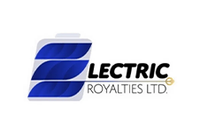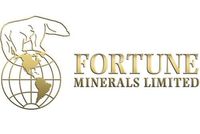Mining for Riches: The Problem(s) with Artisanal Mining

Artisanal miners throw up lots of challenges for mining around the world: political, social, economic and environmental.
In June, 43 artisanal miners were killed when hand-dug tunnels collapsed on a copper-cobalt mine site in the Democratic Republic of Congo (DRC).
Artisanal mining is a well-known challenge in Africa, and the accident’s high death toll highlighted the dangers faced not only by local communities trying to make a living, but also major operators that are obligated to keep their sites safe and secure for their own workers and the surrounding area.
The miners were on a site owned by Kamoto Copper Company (KCC), which is a part of the Glencore (LSE:GLEN,OTC Pink:GLCNF) empire. The deaths did not disrupt company operations, but Glencore said the miners were working on its concession illegally, and the company’s share price took a hit.
In the wake of the incident, the Investing News Network (INN) reached out to experts to talk about artisanal small-scale mining (ASM), which is the type of mining the workers who died in June were carrying out, and the problems associated with ASM for all parties.
There’s a distinction between artisanal mining and illegal mining, which Lauren Armistead, who works on ASM in the DRC as part of Amnesty International’s business and human rights team, said has to do with whether the miners are permitted to be there.
In the DRC, artisanal miners can work in areas called ZEAs (zones d’exploitation artisanal), but Armistead said that not only are there not enough ZEAs, they are often not very productive.
“As a result, that means that artisanal miners are forced to look for places to dig and exploit minerals in areas that aren’t authorized, or by going on to large-scale mines,” she explained. This bumps them from being just ASM miners up to being illegal miners.
What is artisanal mining?
According to Armistead, ASM is a practice wherein mining is done with hand tools with no mechanization, though the mines can get very deep.
“So in unauthorized areas where (ASM) is not formalized, it can get very dangerous,” she said.
However, she said that artisanal miners need the work. “It also provides a lifeline and a means of earning a living. … In the south of the DRC, 150,000 to 200,000 people earn a living by doing artisanal mining.”
Charles Dumbrille, chief risk officer at In-D-Tel International, said that artisanal miners tend to be mostly male, with many of them doing ASM to get rich.
“They can be anywhere from subsistence farmers to skilled laborers from urban areas seeking an income,” he said.
Artisanal miners operate much like large-scale miners do — gravitating towards the minerals that will yield the most profit — meaning that both large-scale and small-scale miners operate in the same areas.
For the hundreds of thousands operating in the DRC, the mineral of choice has traditionally been cobalt due to its abundance and high price, and ASM’s contribution to national output has been significant.
“ASM contributed more than 20 percent of the DRC’s total cobalt output in 2018,” said Andries Gerbens of Darton Commodities, though he added that, with a falling cobalt price and surplus ore stock, ASM interest in the mineral is decreasing.
Recent reports suggest that the new mineral of choice for artisanal miners in the DRC is copper, as the red metal is faring comparatively well in 2019.
In other parts of the world, like Ghana, the mineral of choice is gold, with the yellow metal being a reliable performer for small-scale miners seeking a living (and also for causing problems). Ghana is also an up-and-coming gold jurisdiction of choice.
Issues with both artisanal and illegal mining
Besides what’s already been mentioned, there are a slew of challenges and problems that are posed by ASM, including issues with human rights, the environment, politics, the supply chain and — as shown by the Glencore site disaster — safety.
“The risks to the operators are that there are accidents on the mines,” said Armistead, adding that there is also a significant risk of clashes between artisanal miners and company workers on operational sites.
“That area in the DRC has a history of clashes between mines police, other state agents and the miners,” she explained.
Armistead also referred to the recent deployment of the DRC army to the Chinese-owned Tenge Fungurume site as an issue.
“The DRC army has a long history of excessive use of violence. They are not properly trained or equipped to carry out that kind of public order function, so we were very concerned that there were going to be serious human rights violations.”
Gerbens told INN that human rights concerns around artisanal mining in the DRC are more pronounced due to the unique place ASM has within that particular market — ASM in the DRC accounted for 15 percent of global cobalt output in 2018.
“Public scrutiny of the sourcing risks linked to artisanal and small-scale mining and the human rights issues associated with it have increased dramatically in the past two to three years,” said Gerbens, noting that the scrutiny is driving change.
“The lithium-ion battery supply chain in particular has been faced with growing pressure directed at its responsible sourcing practices, not just from non-governmental organizations (NGOs) like Amnesty International, but also from the media, regulatory and legislative bodies and consumer organizations.”
Solutions to ASM and illegal mining
The short answer to the question of how to solve all the above problems is that there is no easy solution.
“It should be in the best interest of the government and the mining companies to set aside concessions on which artisanal miners can operate in controlled and safe conditions,” said Gerbens.
Armistead said the same: that the best solution is for miners and governments to create more zones where artisanal miners can work that are of a high enough quality for them to make a decent living.
“(Amnesty International) would like to see more authorized zones,” she stated. “A common complaint amongst artisanal miners is that the sites they are given aren’t as productive, and so they then end up going back on the mining site.”
She said that miners, NGOs and state bodies are all in the same boat together when it comes to ensuring safety, so everyone needs to chip in.
One thing that doesn’t help, said Armistead, is the government approaching artisanal miners aggressively. “The DRC has a mines police, and any force that does carry out that function, should be properly trained and equipped. It should be a public order force, and not the army — not the DRC army at least.
“(Glencore) should be concerned.”
In response to the deployment of the DRC army to the Glencore site, the company did indeed put out a release imploring the government to exercise restraint in removing the miners, saying that it wished to remind the government of its human rights responsibilities.
Armistead said that overall, large-scale operators should be in constant engagement with governments to ensure their sites are safe — and to ensure that the governments don’t send in the army.
“I think all these large-scale operators should really be clear that they are publicly opposed to any sort of demolitions or threats of demolitions to control miners, and all kinds of operations on their concessions have to be carried out in full conformance with human rights standards.”
The DRC’s interior minister doesn’t think much of the artisanal miners, however.
In the aftermath of the DRC tragedy, while announcing that the DRC military would be removing artisanal miners from Glencore’s site, the DRC’s interior minister, Basile Olongo, called the 43 dead miners thieves.
Armistead said that Amnesty International is concerned with those comments, noting that they were “really regrettable.”
“These are people trying to eke out a living — they’re not thieves.”
What can companies do to account for artisanal risks?
According to Gerbens, there are a wealth of initiatives working to ensure that the sourcing of minerals through ASM is done ethically and in compliance with OECD due diligence guidelines on human rights.
“The industry needs an increase in company-level action through mapping and auditing, as per OECD guidelines and market expectations.”
Some of the firms working to cut back on artisanal cobalt mining dangers are the Responsible Cobalt Initiative and the Better Cobalt Pilot Project, along with projects like the one set up by Ford (NYSE:F), LG Chem (KRX:051910), IBM (NYSE:IBM) and RCS Global to monitor the cobalt supply chain.
Dunbrille said that in the gold space there are mechanisms and standards used by western companies that prevent materials from shadier sources from getting into the supply chain, but there are markets in place (such as the United Arab Emirates) that still allow ASM materials to make it out of countries with a lot of under-regulated ASM activity.
Dumbrille said there is no single sustainable solution to ASM issues, but there are still solutions that can be worked on.
“Large-scale mining companies need to deliver socioeconomic development by trying to help with formalization while providing appropriate technical assistance and technology.”
He concluded by saying that there is simply no one size fits all approach.
“Academic and NGO research has flooded the industry with donor-funded solutions, and ASM and illegal mining continues to be a problem … Coexistence is the best and most complex approach.”
Does artisanal mining cost large-scale miners money?
Short answer: Yes.
Long answer: While artisanal miners can interfere with large-scale operations, companies like Glencore can still turn a massive profit from mines deep within regions affected by artisanal mining as minerals produced in these areas are still in high demand.
Solutions to the risks posed by artisanal mining are time consuming and difficult to coordinate, and while achieving all those goals are expensive, they would help prevent deaths like those in the DRC, and companies like Glencore could avoid any potential reputational risk to their operations.
Don’t forget to follow us @INN_Resource for real-time updates.
Securities Disclosure: I, Scott Tibballs, hold no direct investment interest in any company mentioned in this article.
Editorial Disclosure: The Investing News Network does not guarantee the accuracy or thoroughness of the information reported in the interviews it conducts. The opinions expressed in these interviews do not reflect the opinions of the Investing News Network and do not constitute investment advice. All readers are encouraged to perform their own due diligence.


